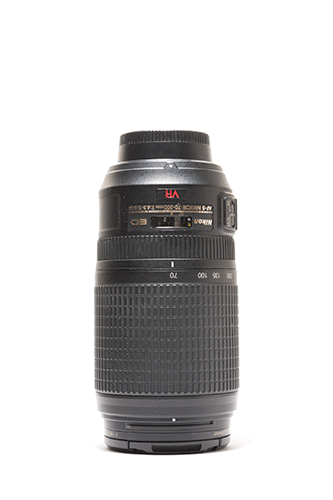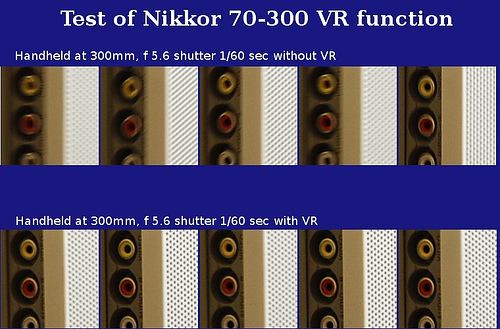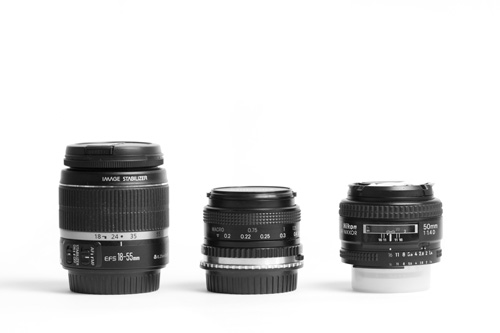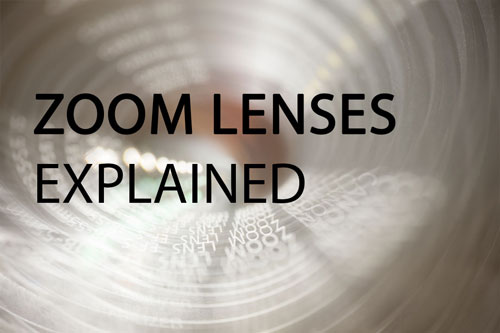About Zoom Lenses
Most compact cameras come fitted with built-in zoom lenses, and interchangeable lens cameras often come with a zoom lens bundled as part of the package. So what are the advantages of zoom lenses, and are there any potential problems to look out for?
What is a zoom lens
A zoom lens is a lens that covers a range of different focal lengths. The field of view that your camera will capture depends on the focal length of the lens. So a short focal length lets you capture a wide view while a longer focal length lets you capture a narrower view.

Zoomed out to a wide-angle focal length gives a wide field of view

Zooming in to a longer focal length gives a much narrower field of view
A zoom lens lets you adjust the focal length (which in turn defines the field of view that will be captured). Some cameras with built-in lenses do this by use of a control on the camera that you push in one way to zoom in, or the other way to zoom out.
Most interchangeable lenses feature a zoom ring. You turn the ring one way to zoom in, or in the opposite direction to zoom out.
Because zooming is changing the focal length of the lens, you will find that the length of the lens changes as you zoom in or out.

Example demonstrating of how the length of a lens changes when it is zoomed in compared to zoomed out
Getting close
The main benefit of a zoom lens are that it allows you to get a closer framing of your subject without moving. This can be very handy if you want to isolate part of a scene. You can get close to your subject without having to get physically close. Great for sports photography, candid portraiture, and photographing far-off landscapes.
Changing perspective
Another benefit is that a zoom lens allows you to use multiple perspectives, without having to change your lens. A wide-angle portrait not always particularly flattering. But with a zoom lens, you can stand further back, and then zoom in to get the same framing, but with much more flattering perspective.
Zooming in also has an effect of "compressing" the background. This makes for a less busy background, which draws attention to your subject.
Although not taken with the same camera / lens, the two photos below give a good example of how standing further back and zooming in can help to isolate your subject:

Cute Kid by watchsmart on flickr (licensed CC-BY) - taken at a wide-angle (zoomed out) focal length

Nikon Kids. by Amirul Hilmi Ariffin on flickr (licensed CC-BY) - taken at a telephoto (zoomed in) focal length
Travel zooms
Zoom lenses are great for travel as well. Rather than packing a set of lenses to take on holiday, you can just take the one lens. Lenses like the 28-300mm lens for full frame cameras, or 18-200mm lenses for APS-C cameras, are known as "All in one" lenses as they cover the focal lengths 90% of people will want for almost all their shots.

The Waiting Room by Pepe Pont on flickr (licensed CC-BY-ND) - shot using a Tamron 18-270mm zoom lens
The zoom lenses on compact cameras do the same thing as well. You can even get superzoom cameras that come with a built in zoom lenses that cover a massive range. For example, the Sony Cyber-shot DSC-HX200V has a 27-810mm equivalent zoom range, that is a 30x zoom!
Optical vs Digital zoom
You won't find any interchangeable zoom lenses that feature digital zoom, but some cameras with built-in lenses have digital zoom. Digital zoom is not really a zoom at all - it just means that the camera crops out the center of the image and then enlarges it to the full image size. You can do the same thing on your computer.
Optical zoom, on the other hand, refers to the zoom being lens based. (All zoom lenses are optical zoom). So if you see a camera advertised that offers 3x optical zoom and 4x digital zoom, you can ignore the part about digital zoom. Optical zoom is the part to pay attention to.
Image stabilization
Many zoom lenses and cameras with built in zooms, also come with image stabilization. This steadies the image, so that you are less likely to get blurry shots due to camera shake.

Test of Nikon VR function by dr_relling on flickr (licensed CC-BY)
Price
Price wise, zoom lenses work out much cheaper than buying a set of fixed focal length (prime) lenses that cover the same range as the zoom. However, if you are only going to shoot at one end of the zoom range, then a single fixed focal length lens might work out cheaper.
Quality
With advances in technology, both in cameras, and lens development, modern zoom lenses offer very high quality images. Often, modern zoom lenses provide better image quality than that of old fixed focal length (prime) lenses.
However, a modern prime lens will nearly always give better image quality than a modern zoom lens. This is because zoom lenses require more glass elements, and more of the elements need to move around in a zoom lens. So construction to the same level of tolerances as a prime lens is more difficult.
Modern prime lenses are also typically aimed at professional photographers (and priced to match). This means they use more expensive elements and construction techniques than zoom lenses, which are aimed more at amateurs and enthusiasts.
While zoom lenses don't offer the ultimate in image quality, they are better than good enough for the large majority of purposes.

An 18-55mm zoom lens compared to 24mm and 50mm fixed focal length prime lenses. Although the zoom lens is larger, it is smaller (and lighter) than the combined prime lenses. As well as 24mm and 50mm, the zoom lens also covers the same focal lengths as 18mm and 35mm prime lenses, plus all the focal lengths in between.
The fact that zoom lenses use more parts (and have more movement) than a single equivalent fixed focal length lens also means that there is more to go wrong in a zoom lens. However, this seems to be more in theory than in practice.
The aperture trade-off
One thing that you do give up by using a zoom lens is a large aperture. The large majority of zoom lenses offer apertures from around f/3.5 to f/5.6. Why does this matter? Well, for most people, it doesn't matter. But if you want to make use of shallow depth of field, then it could be important to you.
The other thing that a faster aperture allows you to do, is to shoot handheld / with faster shutter speeds in low light. Although you can get fast zoom lenses, with an aperture of f/2.8, fixed focal length prime lenses can have apertures as fast as f/1.4 (or even f/0.95 in some cases).
However, prime lenses with fast apertures are expensive, large and heavy. If you don't regularly need a very shallow depth of field, or to use fast shutter speeds in low light, then a zoom lens is a great choice.
Zoom lenses can make great all round lenses. Sure, there are some trade-offs, but other than some specialist situations, a single zoom lens can be all you need to take some great photos. The compact size and weight compared to a set of prime lenses is the big advantage of zoom lenses. No wonder zoom lenses are by far and away the most popular type of lens sold today.





